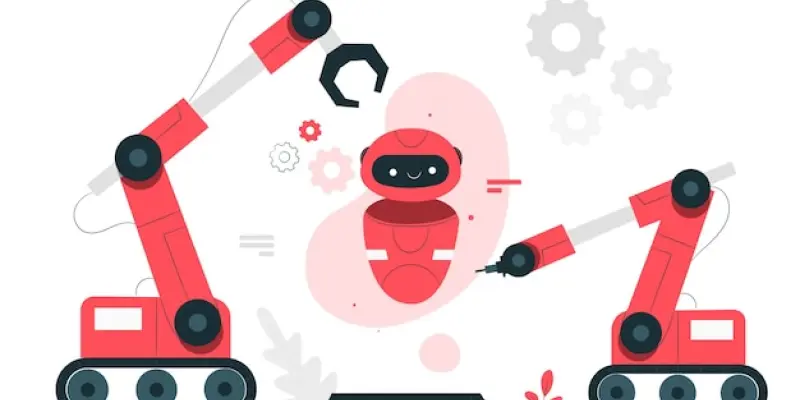Epson Robotics has stepped forward in redefining robotic safety, unveiling its state-of-the-art GX-C series of SCARA robots. This development brings with it a groundbreaking amalgamation of safety and efficiency, setting a new standard in human-robot collaboration. Central to this innovation is the integration of advanced SafeSense technology and the GYROPLUS vibration reduction system, both designed to enhance productivity while ensuring safety. This series, backed by the latest Epson RC+ 8.0 software and the cutting-edge RC800A robot controller, minimizes setup and maintenance costs while optimizing control and operational workflow. This article explores the advanced technological features that define this series and their implications for industrial applications.
A New Outlook on Safety in Robotics
Eliminating Traditional Barriers
Historically, ensuring safety in industrial environments with automated machinery involved cumbersome and costly physical barriers like cages and light curtains. While effective in minimizing accident risks, these measures often impeded workspace efficiency and incurred significant installation costs. Epson’s GX-C series offers a transformative solution with its integrated SafeSense technology, which eliminates the need for such traditional barriers. SafeSense works by dynamically detecting changes in the environment and adapting the robot’s operations accordingly, thus liberating valuable floor space and reducing costs without compromising safety. This leap forward allows businesses to reconfigure their operations to maximize efficiency and cultivate a safer work environment without restrictive measures.
Furthermore, SafeSense seamlessly integrates into existing systems, providing a flexible yet robust safety solution that aligns with the evolving landscape of collaborative robotics. This adaptability ensures that industries can maintain their operational momentum without undergoing extensive modifications to their existing infrastructure. By prioritizing human-robot collaboration, SafeSense not only caters to contemporary safety demands but also anticipates and addresses future needs as well. As industries continue to evolve, the emphasis on streamlined and adaptable safety solutions like SafeSense becomes even more pronounced.
Performance and Precision
Performance enhancements do not end with safety. The GYROPLUS vibration reduction system embedded within the GX-C series sets a new benchmark for precision and energy conservation. By minimizing vibrations, the system extends the lifespan of components and reduces maintenance costs while simultaneously boosting efficiency. This precision translates to smoother operation, allowing for more delicate tasks and complex operations to be undertaken with ease. The responsiveness of the GX-C robots is further enhanced by the sophisticated RC800A controller, which ensures high-performance motion control and precise positioning.
The controller supports open architecture hosting flexibility, facilitating diverse tasks such as conveyor tracking, machine vision, and component feeding. This flexibility is pivotal in crafting seamless integration with existing workflows while adhering to rigorous safety standards like ISO 10218 and ISO/TS 15066 for collaborative robotics. Such compatibility guarantees that operations run smoothly, with minimal downtimes and interruptions, which is critical in fast-paced industrial settings. By ensuring these capabilities, Epson not only enhances performance but also fortifies its commitment to innovation that meets real-world needs.
Diverse Applications and Integration
Versatility Across Workspaces
Epson’s GX-C series showcases its versatility through its design, allowing for seamless integration across various industrial environments, including clean rooms and ESD-safe settings. The robust construction of these robots, equipped with battery-free encoders and integrated Ethernet, supports adaptability in unique industrial scenarios. The compact construction features flexible mounting configurations and optional arm reach, accommodating customizable work cell designs that are efficient in utilizing space. This focus on adaptability ensures that the GX-C series can meet contemporary industrial challenges while allowing companies to maximize workspace utility without compromising on their specific requirements.
Diverse settings also demand different operational capabilities. The GX-C models are crafted to function optimally under varying conditions and constraints, thus reinforcing their place as a choice for industries seeking robust and inclusive automation solutions. Whether in sectors requiring stringent cleanliness protocols or environments susceptible to electrostatic discharge, these robots maintain unparalleled performance and reliability. Their flexibility guarantees not only broad applicability but also consistent quality of operations across diverse conditions, thereby securing their place in modern industrial environments.
The Future of Collaboration
Incorporating intelligent safety with precision and performance, the GX-C series exemplifies the future of collaborative robotics. As industries increasingly shift towards automation and collaborative robotic systems, the GX-C models offer businesses a strategic edge. This series represents a harmonious blend of cutting-edge technology and practical usability, catering to the modern industry’s demand for efficient, safe, and precise automation. The RC800A’s adaptive safety measures, such as the Safety Limited Speed (SLS) and Safety Limited Position (SLP) functions, reflect this emphasis on dynamic adaptability while enhancing overall system responsiveness.
Visitors to industrial expos and technology showcases have already witnessed the comprehensive capabilities of the GX-C series. These demonstrations highlight advancements in human-robot collaboration, showcasing a future where intelligent automation facilitates safer and more efficient workplaces. In serving as a bridge between safety, productivity, and adaptability, Epson’s GX-C series embodies a vision of the future that leverages technological innovation to meet the complex demands of evolving industries.
Redefining Industrial Innovation
Epson Robotics is advancing the frontier of robotic safety with its launch of the GX-C series of SCARA robots. This innovative series is reshaping the foundation of safe human-robot collaboration by merging safety with efficiency. Central to the series are two groundbreaking technologies: advanced SafeSense and the GYROPLUS vibration reduction system. These are designed to boost productivity and guarantee safety during operation. Accompanied by the latest Epson RC+ 8.0 software and the state-of-the-art RC800A robot controller, the GX-C series is engineered to streamline setup and reduce maintenance expenses while optimizing control and operational processes. This launch aims to push boundaries in automation and redefine industry standards. The adaptive technology not only assures enhanced performance but also widens industrial application possibilities, paving the way for more secure and efficient collaborative environments, where sophisticated robotics systems meet human ingenuity.

